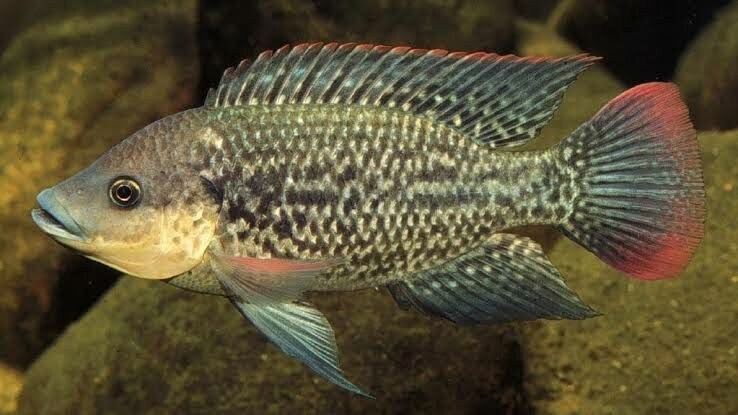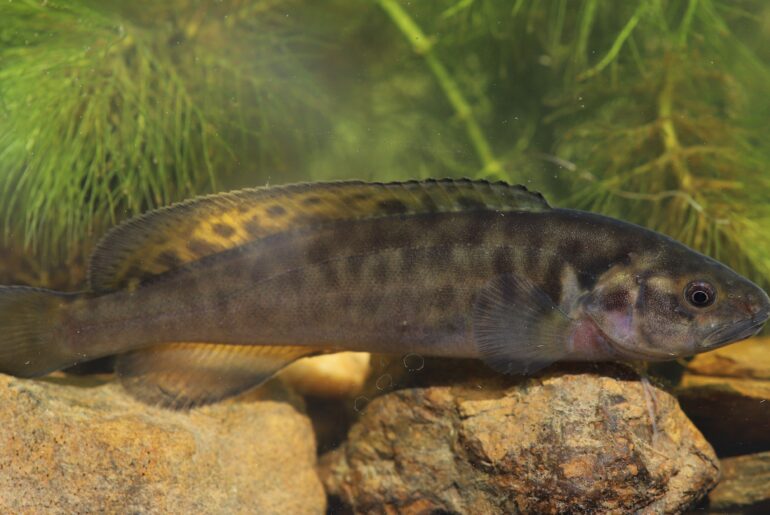TropWATER researchers are revolutionsing how we investigate life underwater using water samples and some sophisticated eDNA technology. As the pace of development increases, there is a pressing need for ever more information on the status of biodiversity within our aquatic environments. Field sampling, especially in remote locations of northern Australia is expensive, and poses many resourcing, safety and logistical challenges. This has limited our knowledge of aquatic biodiversity in such areas. However, recent developments in DNA technology, collectively called ‘environmental DNA’ or ‘eDNA’, gives us the potential to easily and rapidly assess species presence within any given waterbody.

‘eDNA’ refers to DNA that can be extracted from air, water or soil, as plants and animals shed cellular material in their surrounding environment. The use of eDNA technology allows positive identification of the presence of certain aquatic species from the collection and analysis of DNA material in water samples, complementing traditional field sampling. In practice, this means surveying an aquatic field site is as easy as collecting a water sample. Needless to say, the widespread application of eDNA technology, currently under development and within our grasp, will revolutionise the way field programs are conducted, and greatly increase the flow of information about aquatic biodiversity.
Using eDNA to track Tilapia
There are many potential uses of eDNA technology in aquatic ecosystems. One of the first applications being trialled is the detection of introduced invasive species. Invasive species are a major problem in Australian waterways, especially in the tropics where warmer water favours the many tropical species found in the aquarium trade (the main source of fish introductions). The Ross River, which runs through the city of Townsville in North Queensland, has more invasive species than any other river in Australia. At the last count, 20 species of exotic fish had established in this river, tilapia being the most problematic.

Tilapia, a member of the Cichlidae family, were introduced to Australia as aquarium fish. They have been slowly spreading in Queensland, and are now present in 21 of the 76 catchments. They are considered the most problematic invasive fish across the state, and have recently been found in northern New South Wales, further extending their range. Their success lies in their highly efficient breeding strategies, flexible habitat and dietary preferences. They tolerate a wide range of temperatures, high salinities and low levels of oxygen, and are also very aggressive, easily out-competing and displacing native Australian fish. It is therefore vital to prevent their further spread into new catchments.
This goal relies upon a combination of public education (not to spread the fish) and early detection of any newly created populations to guide management responses, including eradication attempts where feasible. Early detection, and understanding the distribution of nascent populations, are key to deciding upon appropriate management responses for new incursions. At James Cook University’s TropWATER, Drs Damien Burrows and Dean Jerry along with PhD student Heather Robson, are developing field and lab methods for the application of eDNA to assist tilapia management.

The first step taken by the research team was to develop primers specific to tilapia. Primers are very short genetic sequences from a standard part of the genome, and are used to distinguish DNA in a water sample the way a supermarket scanner distinguishes products using the black stripes of the barcode. As no two species have the exact same ‘code’, the primers are species-specific. The TropWATER team have been developing cheap and rapid means of collecting, filtering and analysing water samples, as well as doing experimental work to verify detection probabilities under a range of varying conditions (e.g. temperature, salinity, flow, time since tilapia were present). The technique has a high reliability of detection and has been used to pinpoint the distribution of tilapia in the Mitchell, Townsville, Fitzroy, and Pioneer catchments in Queensland, as well as the recent incursion into northern New South Wales.

The detection of invasive species is just one application of this transformative technology. At James Cook University, eDNA primers have been developed and are being used to survey for endangered frog species and the rare freshwater sawfish. TropWATER are currently working on developing primers for otherwise hard to detect cryptic species, as well as barramundi and various turtle species. The focus on using eDNA for other invasive pest species also continues. Within a few years, we plan to be able to detect most aquatic species in northern Australia via the collection of water samples.
For more information check out Tropwater.com for more information on TropWATER’s involvement with eDNA research or contact Damien.Burrows@jcu.edu.au.
Related stories:
For more great stories about the North check out the RipRap Magazine Edition 38 on Australia’s Northern Rivers and Estuaries.
https://finterest.com.au/reducing-the-risk-of-tilapia/



